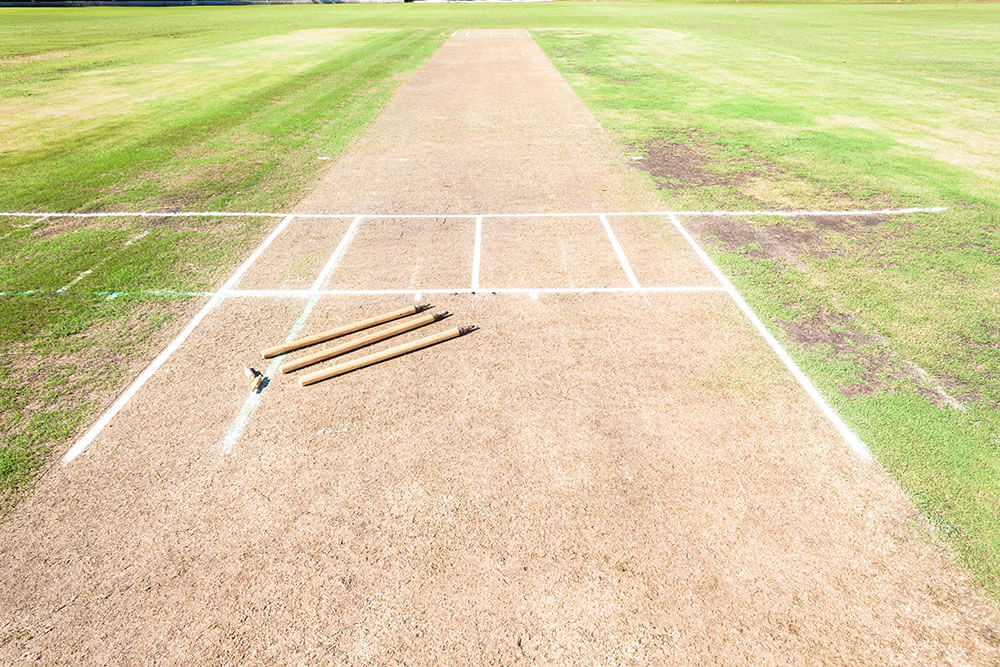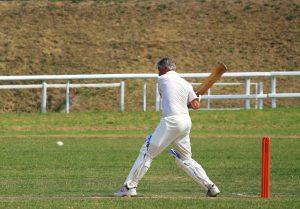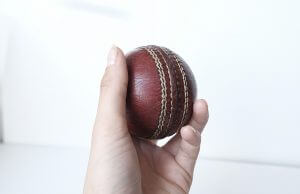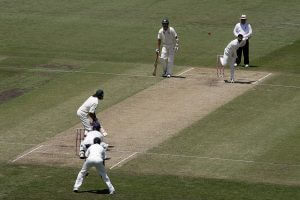How to Hit a Six in Cricket

You must have often wondered why is it that some cricketers find it incredibly easy to hit sixes while some are poor at even connecting the ball, to say nothing of sixes. The T20 cricket demands scoring heavily, thus, batsmen these days practice specifically for this aspect of the game. At times, it seems like an act of madness when someone like Rohit Sharma or Chris Gayle hits sixes at will. They get these big hits out of nowhere that leaves us stunned. It is easy to assume that these are caused by their reckless shots or that the players have simply got lucky.
Well, the fact is there is always a method to the madness. The batsmen might seem to be slogging but a lot of factors are in play when someone hits a ball into the stands. Contrary to a popular belief, luck has very little role to play in it. A lot of things from batsman’s stance, the position of the head, his strength, the bat being used, the swing of the bat, how close he is to the pitch of the ball and so on come into play during the execution of a successful big hit for six runs.
Let’s go into detail, taking a look at each one of them to unravel the mystery related to the technique of hitting sixes.
Contents
Focus on Technique and Timing
The role of the technique cannot be overstated while trying to hit the ball out of the ground. The six-hitting technique begins right from the moment the bowler starts his run-up until the ball hits the batsman’s bat.
KeKeep Watching the Ball
e first and foremost is watching the ball closely right until the moment you hit it. Some players watch the ball in the bowler’s hand from the moment the bowler starts running-in to bowl, while others prefer to focus on the general direction of the bowler until he brings the hand up for delivering the ball. Both techniques have been tried and tested at the international level and they both work pretty well. Whichever technique you use make sure to practice it first in the nets.
Contents
Keep Watching the Ball
e first and foremost is watching the ball closely right until the moment you hit it. Some players watch the ball in the bowler’s hand from the moment the bowler starts running-in to bowl, while others prefer to focus on the general direction of the bowler until he brings the hand up for delivering the ball. Both techniques have been tried and tested at the international level and they both work pretty well. Whichever technique you use make sure to practice it first in the nets.The next thing is to watch the ball out of the bowler’s hand. There is no alternative to this. This is a must to understand the trajectory, to gauge the line and length and to determine which way the ball is going to move or turn in case of a spinner, before it actually lands on the pitch. Knowing this would give you an extra half a second to react to the ball better. That extra half a second is going to be the difference between a mis-hit and a perfect hit for a six.
BattinBatting Stance and Head Position
atting stance and head position play a crucial role to determine how stable you are while judging the line and hitting the ball respectively. Some big hitters who prefer hitting towards long-on or the cow corner, such as Chris Gayle, tend to have an open-chested stance. It becomes easier for them to move the left leg aside while hitting across the line in such cases. Someone adept at hitting sixes in the midwicket and square-leg region, such as Rohit Sharma, prefer a normal stance and are very quick to transfer the weight to the back leg to get the room to swat the short ball out of the way.
There are some players, like AB de Villiers, who can hit sixes anywhere they want to any delivery regardless of where it pitched and who are exceptions to the regular stance and the head rule. However, if you watch such players closely, they are perfectly still until the ball is bowled and all the extravagance comes into play once the ball leaves the bowler’s hand. Make no mistake to think that this happens just like that in a live game. One cannot pull such shots without putting hours of practice in the nets.
Another important point is not to get too close to the ball while trying to hit it out of the park. You will end up yorking yourself or spooning a catch to the fielder in the process. This applies only to the good length or full delivery that you are trying to hit for a six. When a batsman gets too close to the ball, there is no room to get the elevation needed to hit the ball out of the park. At times, players realise this too late and end up checking the shot which either falls safely nearby or ends up giving a simple catch to the fielders.
Move YMove Your Feet
ortant factor that determines how and where you meet the ball is the feet movement. If the ball is short, batsmen move quickly on the back foot and pull or hook the ball towards the leg side of the wicket. If the short ball is a bit wide of the off-stump, some, like Sachin Tendulkar or MS Dhoni, would try to uppercut it over the deep point or third-man for a maximum. When the ball is full, which is an easier ball to hit, players transfer the weight on the front foot and just hit through the line while making sure to get enough elevation needed to cross the boundary line.
A useful technique against the spinners is to step out a couple of steps to the pitch of the ball bowled at or around the good length and loft it from there. Stepping out and reaching close to the ball helps in negating the effect of the turn that may have happened if the ball was allowed to turn. Sourav Ganguly was master at hitting sixes against the left-handed spinners. It also helps when you hit with the spin meaning compensate for the turn by hitting in the direction of the turn in case you misjudge the length while stepping out and the ball ends up pitching farther from the bat than expected.
TimingTiming
hen everything that we talked about up until now goes right, there is one ingredient that makes all the difference in the end. The timing! It is an absolutely essential ingredient in the recipe of six-hitting. If you have to choose between strength and timing for the purpose of hitting long shots, choose timing at any given moment. Timing helps you hit the moving ball at the right moment and generate enough power in the shot as a result of hitting it at the perfect moment. Timing is much difficult to pull off than it sounds and all the factors right from watching the ball to keeping a steady head are crucial to getting it right.
ChooseChoose the Right Bat
ay that the hand holding the bat is more important than the bat itself. However, in modern-day cricket with big bats and shorter boundaries, especially in T20 cricket, the choice of bat can make a huge difference in the six-hitting ability of a player.
Choose the Right Bat
ay that the hand holding the bat is more important than the bat itself. However, in modern-day cricket with big bats and shorter boundaries, especially in T20 cricket, the choice of bat can make a huge difference in the six-hitting ability of a player.Although the width of the bat is limited, the cricket bats are these days manufactured with sufficient depth which increases the area around the edges and overall power of the bat. At times the edges seem like the face of the bat. When the ball hits these huge edges, it flies off much farther than expected of a normal bat. Moreover, these huge bats are not as heavy as they look and can be used by building strength and having enough practice with them. Bear in mind that such bats do not last very long.
Thus, assess your strength and go for the bat that you can handle. If you are predominantly a leg-side back-foot six-hitter, a huge bat won’t make much of a difference. However, when hitting down the line, driving or cutting, the huge bat edge can compensate for misjudged lines and lack of timing on the ball.
It is important to note that some players tend to overdo this at the price of their natural technique. A very heavy bat would throw off your balance and timing yielding nothing of an attempted hit. Remember that six-hitting is a part of the game not the whole of it. That is why some smart players, like MS Dhoni, change the bat to a heavier or a larger one in the last stages of the innings when there is a need to accelerate the scoring rate. Whatever you choose to do, make sure you are comfortable with the size and weight of the bat.
Develop Develop Strength
Fitness is a crucial aspect of cricket. In the age of T20 and packed match schedules, it matters even more to keep yourself fit. There are two aspects of fitness – endurance and strength. Endurance determines how long you can go on without exhausting your bodily resources and strength determines the power you generate while bowling, throwing or playing a shot.
When it comes to hitting a six, strength is the second most important factor after timing. The strength of the hand and the power generated by the stability of the legs and core add those extra meters to the shot that are needed to cross the boundary line. Thus, the strength of legs, arms and core are three important parameters you should work on while developing your six-hitting skills






